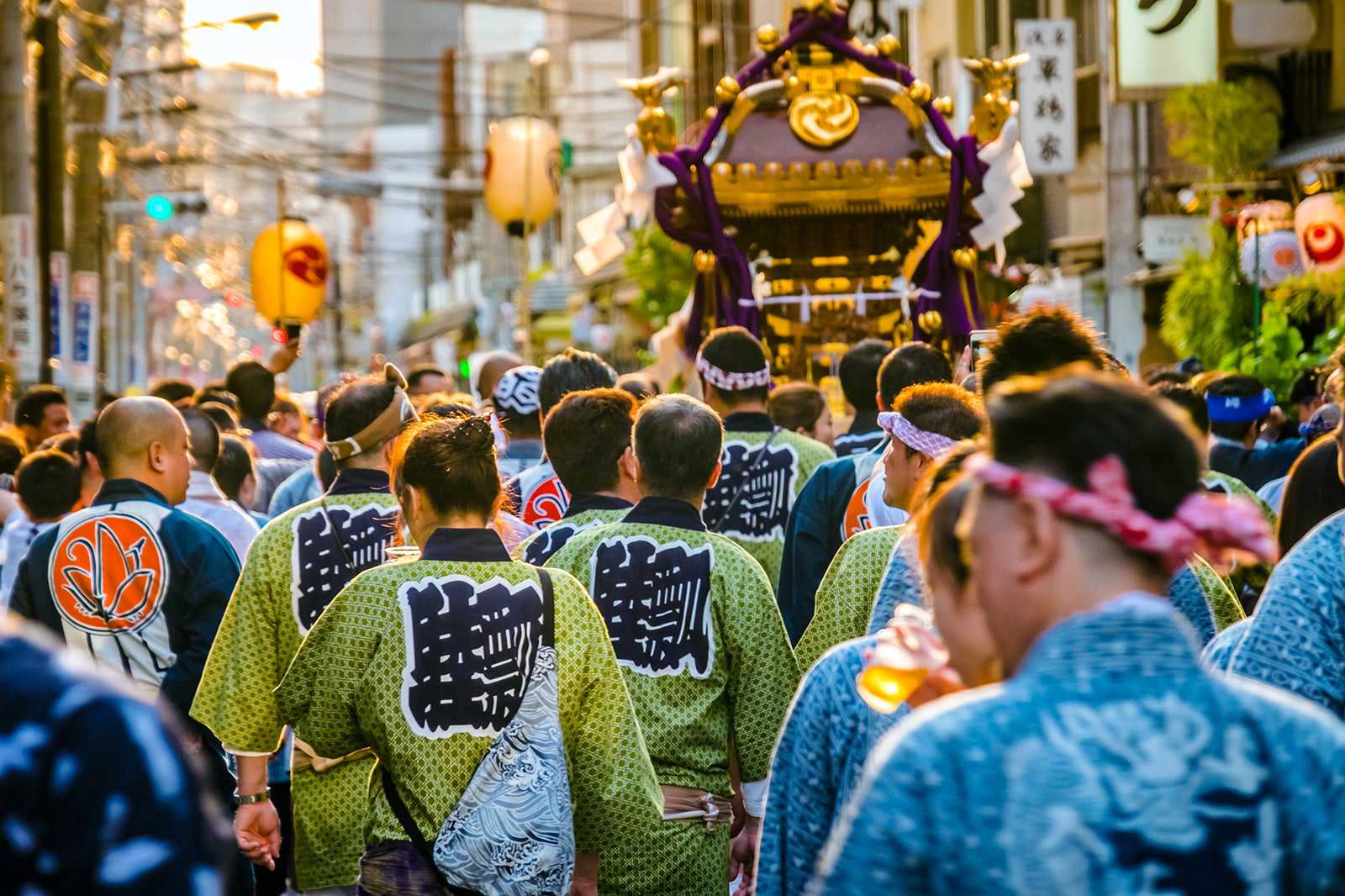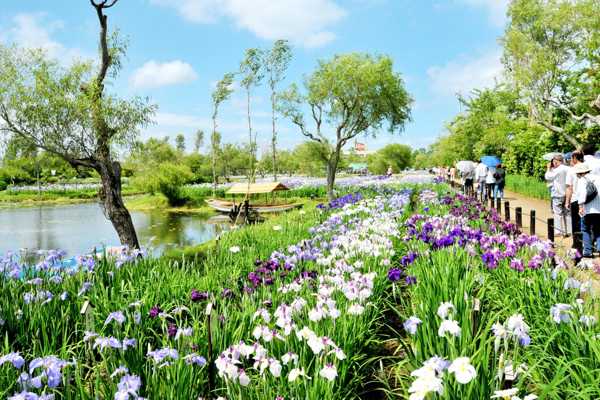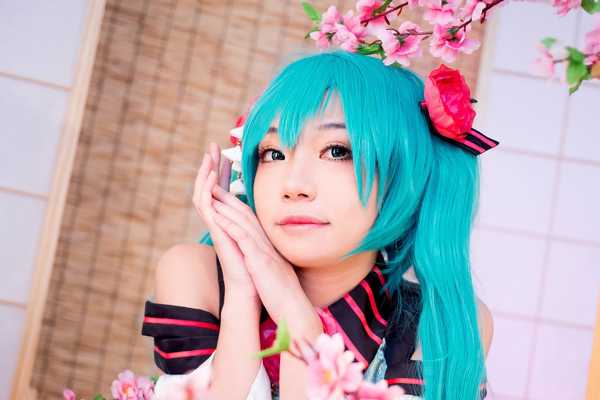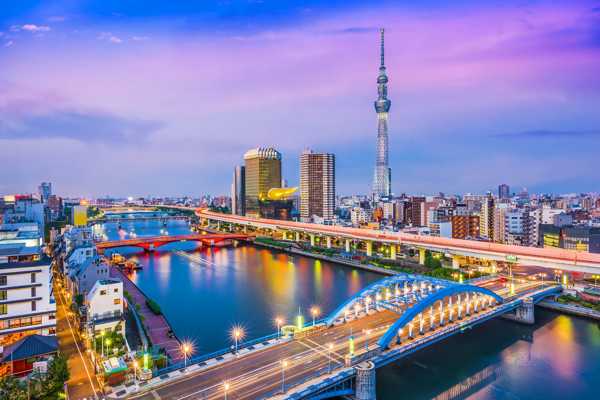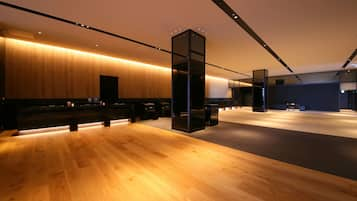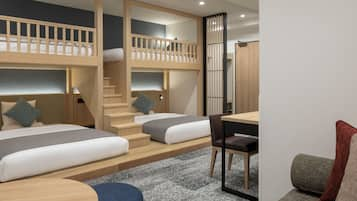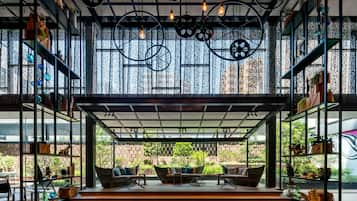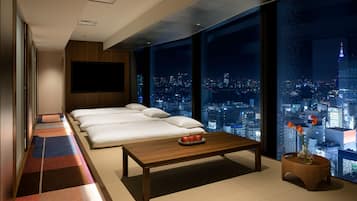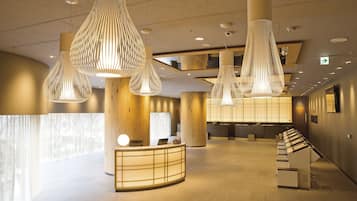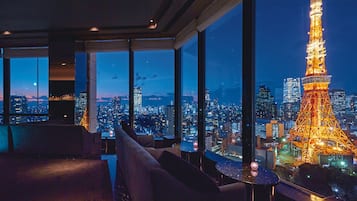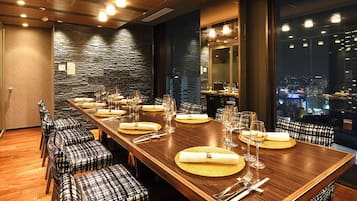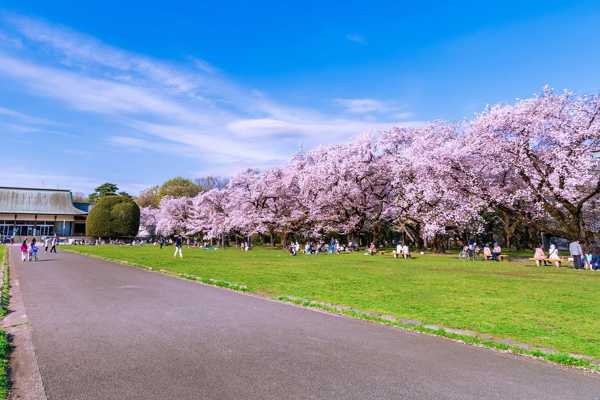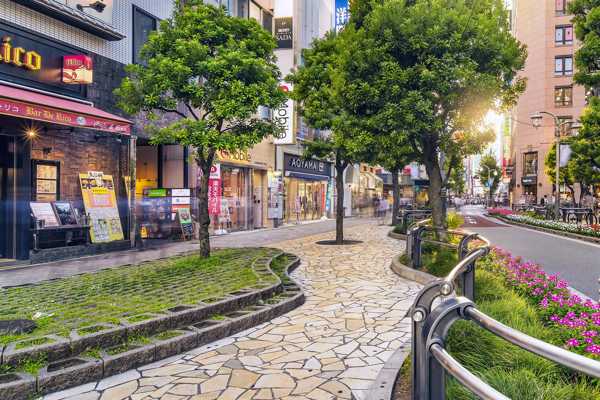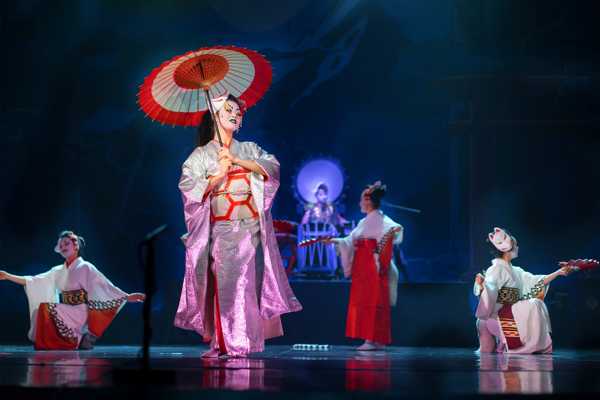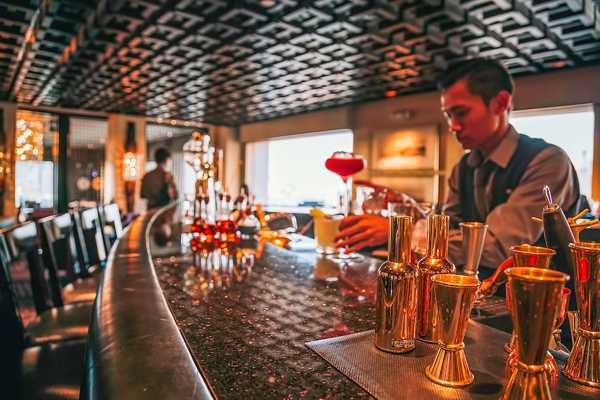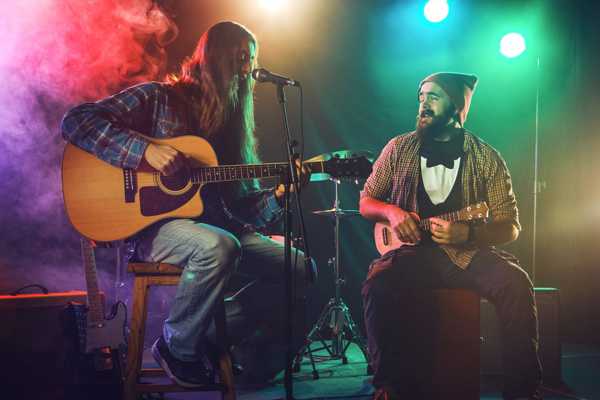Popular events and festivals have been a cultural mainstay in Tokyo ever since the Edo period. The locals get their sense of season with the arrival of these festivals, and they provide a great opportunity to pause and reflect on the passing years. Tokyo events such as cherry blossom viewing, summer festivals, and fireworks displays are held on a larger scale than anywhere else in Japan.
As night draws in, Tokyo is flooded with big city lights and illuminated roadside trees, buildings, and other facilities. The first shrine visit of the New Year, a Japanese custom, is also particularly lively in Tokyo.
- 1
Cherry-blossom viewing
Enjoy the floral richness of springtime in Japan

- Budget
- Paare
- Familien
Somei-Yoshino, the signature cherry tree variety of Japan, is said to have originated in Tokyo. In the Edo period, feudal lords’ residences stood side by side in the castle town, and gardening was very popular. It’s said that cherry trees sold as garden trees became popular here and thereafter spread throughout Japan.
There are nearly 100 cherry blossom viewing sites in Tokyo, and that’s only counting the famous ones. Usually, the season runs from late March to early April, with cherry blossom festivals and illumination events held in many places throughout the city. Particularly popular are Meguro River, Chidorigafuchi Moat, Yasukuni Shrine, Ueno Park, Sumida Park, Yoyogi Park, and Inogashira Park.
Lage: Tokyo, Japan
Öffnungszeiten: March—April
- 2
Winter illuminations
Tokyo at night sparkles with lights and illuminations
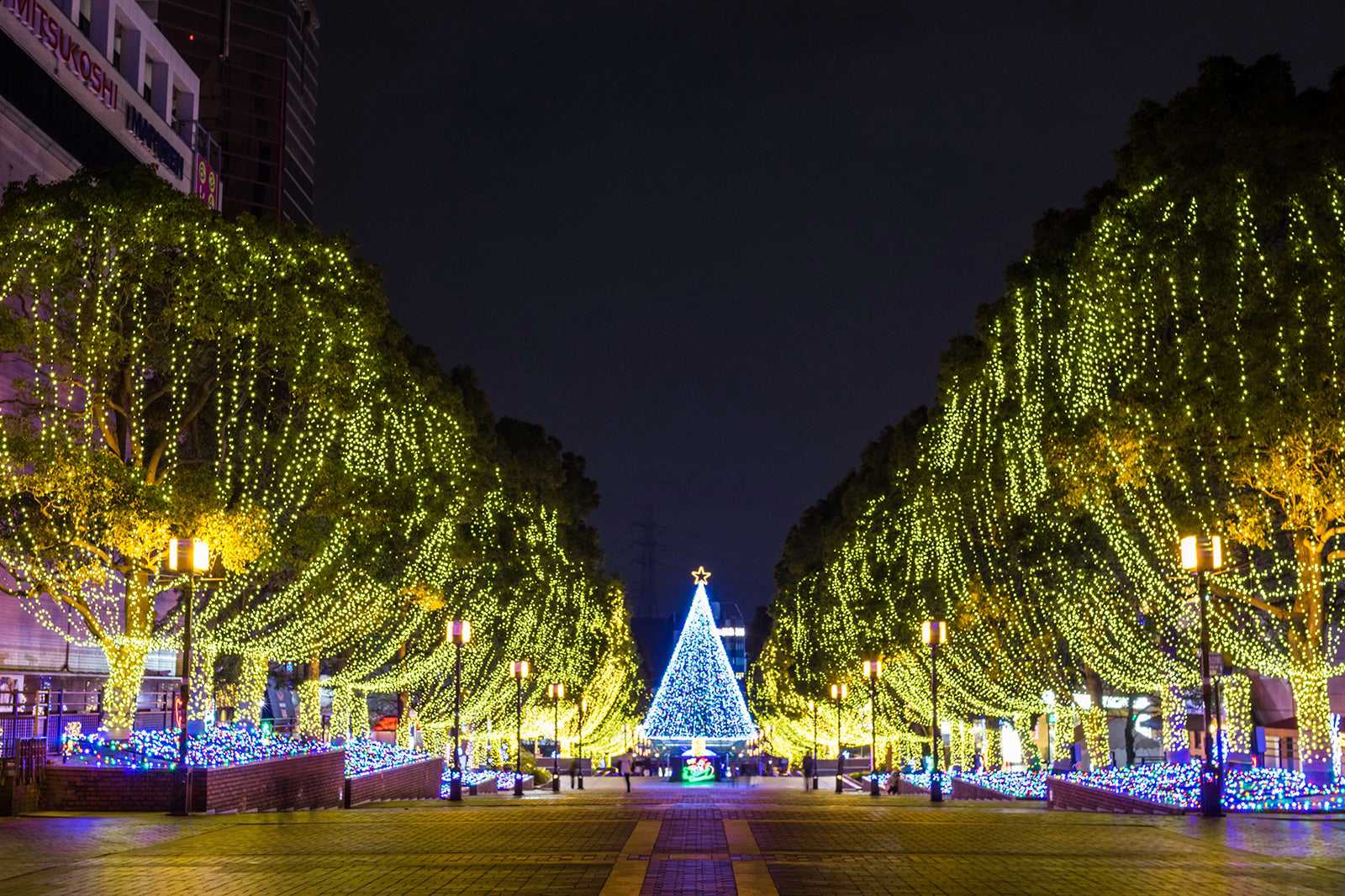
- Budget
- Paare
- Familien
Winter illuminations change the Tokyo cityscape dramatically and are basically a sign that winter is here. The whole city dazzles with lights, creating some eye-popping scenery at night. Once the winter lights are switched on, you can’t help but get into the holiday spirit.
Tokyo’s parks, tree-lined streets, and commercial complexes are ideal for enjoying the winter lights. Popular spots include Yoyogi Park, Marunouchi Nakadori Street, Yebisu Garden Place, Tokyo Midtown, Meguro River, Tokyo Skytree Town, Roppongi Hills, and Omotesando.
Lage: Tokyo, Japan
Öffnungszeiten: Winter
- 3
Fukagawa Hachiman Festival
A unique water splashing festival

- Budget
- Paare
- Familien
Fukagawa Hachiman Festival is a traditional festival celebrated at Tomioka Hachiman Shrine is popularly known as Fukagawa no Hachimansama and has been attended by the common people since the Edo period. The magnificent Golden Mikoshi portable shrine weighs about 4.5 tonnes and features lavish decoration with jewels like diamonds and rubies and a roof of pure gold. There’s also a shrine-owned mikoshi that weights about 2 tonnes, enhancing the festival with a spectacular procession.
The main festival, where 53 town-owned mikoshi are paraded, is held every 3 years. It’s also called the Water Splashing Festival (Mizukake Matsuri) because the mikoshi bearers are splashed with water from the street over and over again. People unite with a hearty cheer of “Wasshoi, wasshoi!” to produce a festival that’s like a step right back into the Edo period.
Lage: 1-20-3 Tomioka, Koto-ku, Tokyo 135-0047, Japan
Öffnungszeiten: Around August 15
Telefon: +81 (0)3-3642-1315
KarteFoto von mrhayata (CC BY-SA 2.0) bearbeitet
- 4
Sanno Festival
Go back in time to the festival processions of the Edo period
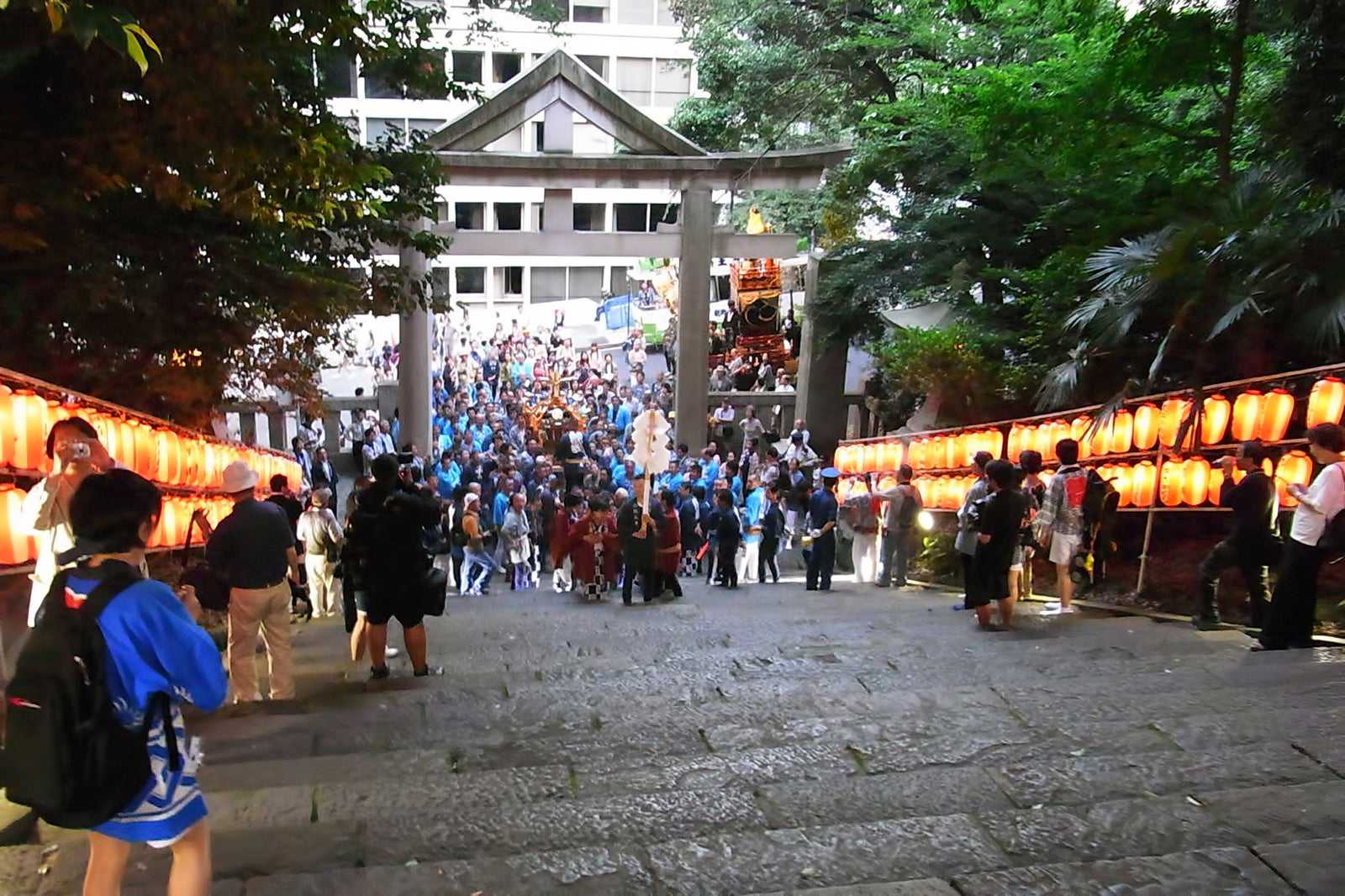
- Budget
- Paare
- Familien
The history of the Sanno Festival dates back to the Edo period, having originated from the Tenka festival, where successive shogun (commanders-in-chief) starting from the third shogun, Iemitsu Tokugawa, would visit and worship at the shrine. At Shinkosai Festival, which is held every other year, those along the route are always excited to see the parade of about 500 people dressed in imperial costume, imperial carriages, shrine-owned mikoshi (portable shrine), and floats.
The children’s version of this parade is also spectacular. In the shrine grounds, lanterns with children’s drawings are lit as a Japanese traditional bon dance festival takes place.
Lage: 2-10-5 Nagatacho, Chiyoda-ku, Tokyo 100-0014, Japan
Öffnungszeiten: June
Telefon: +81 (0)3-3581-2471
KarteFoto von 江戸村のとくぞう (CC BY-SA 4.0) bearbeitet
- 5
Fireworks displays
The large fireworks displays of Tokyo are a symbol of Edo culture
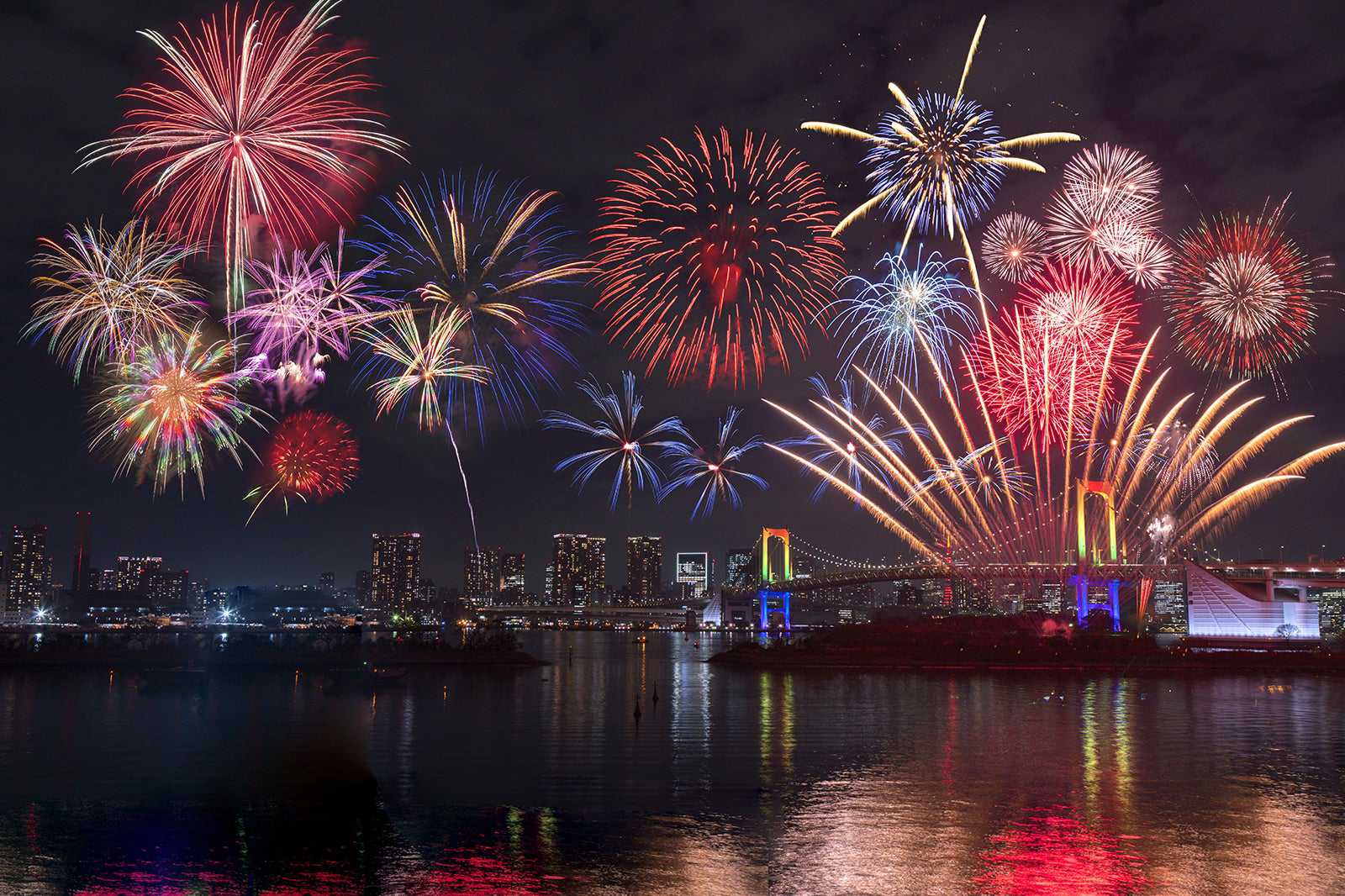
- Budget
- Paare
- Familien
It’s said that the prototype for the fireworks displays that decorate the waterfront in Tokyo in summer was created during the Edo period. Shouting “Tamaya” (jeweller) and “Kagiya” (locksmith), a tradition that remains today, comes from the trade names of popular firework experts back in the day. Japan’s oldest fireworks festival, the River Festival of Ryogoku, continues to thrive today as the Sumidagawa Fireworks Festival.
There are also many other popular fireworks festivals held around Tokyo. Highlights include the Tokyo Bay Grand Fireworks Festival, Showa Memorial Park Fireworks Festival, Jingu Gaien Fireworks Festival, and Adachi Fireworks Festival.
Lage: Tokyo, Japan
Öffnungszeiten: Summer
- 6
Kanda Matsuri
A large procession of portable shrines dear to Tokyoites

- Budget
- Paare
- Familien
Along with the Gion Festival in Kyoto and the Tenjin Festival in Osaka, Kanda Matsuri, the traditional festival of Kanda Myojin Shrine, is said to be one of the three major festivals in Japan. The main festival held every other year in May is particularly famous, and the parade of mikoshi that goes through 108 parishioner communities heading toward the shrine is a really impressive spectacle. During the Heisei period, floats, armed samurai, and firefighters were added to the parade, and a boat procession was also restored. A unique parade called the Tsukematsuri is another highlight.
At the Mikoshi Miyairi parade, the mikoshi of each parishioner community enters Kanda Myojin Shrine to worship. You can really experience the tradition and culture of the people of Edo during this time of year when downtown Tokyo is filled with such a festive atmosphere.
Lage: 2-16-2 Setokanda, Chiyoda-ku, Tokyo 101-0021, Japan
Öffnungszeiten: May
Telefon: +81 (0)3-3254-0753
KarteFoto von 江戸村のとくぞう (CC BY-SA 4.0) bearbeitet
- 7
First shrine visit of the New Year
Make an auspicious start to the New Year with by visiting a temple or shrine
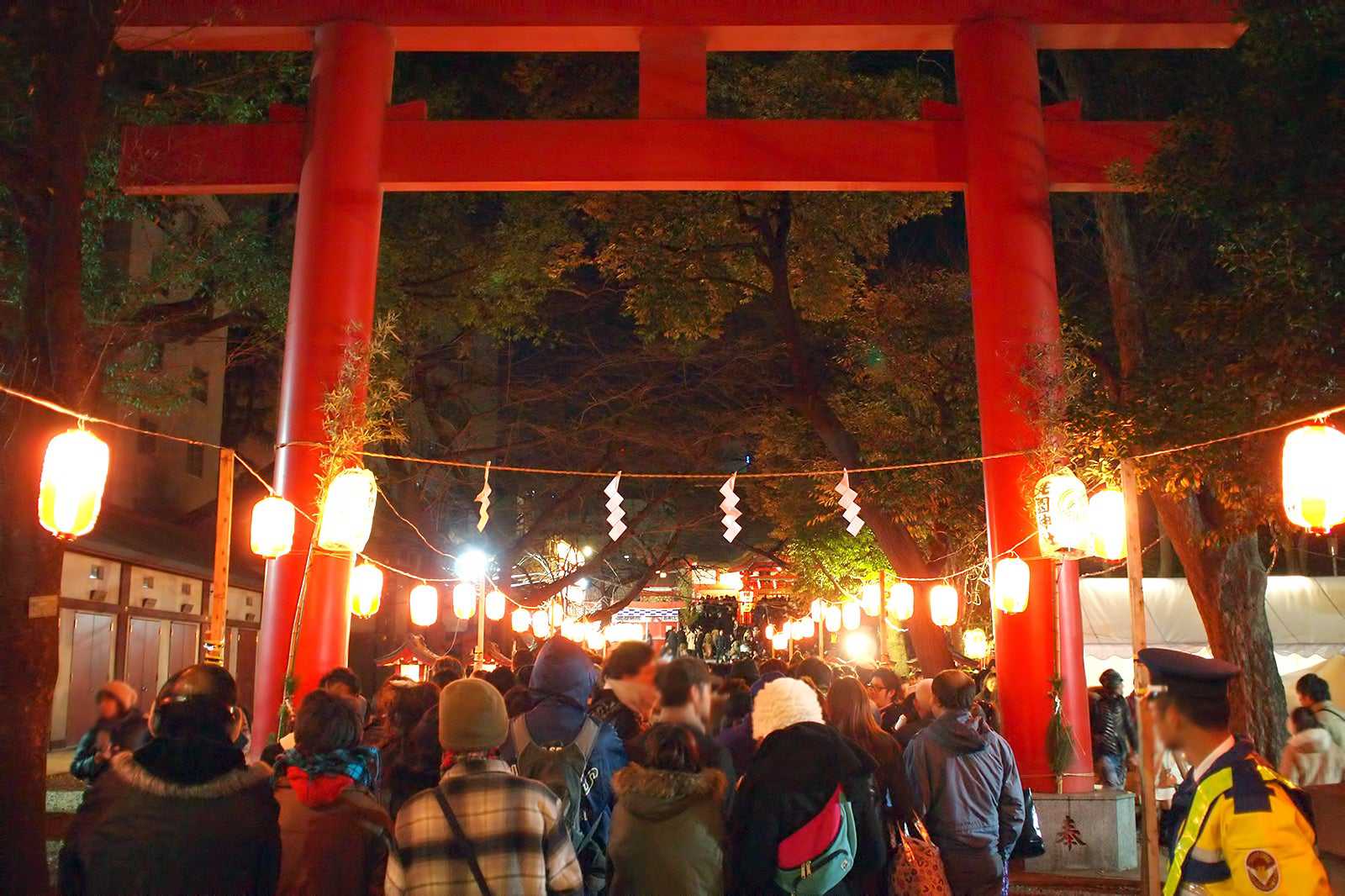
- Budget
- Paare
- Familien
The scene of the first shrine visits of the New Year, when the streets, train stations, and shrines are full of people dressed in gorgeous kimono, is truly unique to Japan. Shrines in Tokyo are always crowded with people for the first visit of the New Year. The shrines related to the Imperial Family are especially famous … and exceptionally crowded.
Meiji Jingu Shrine is usually the most visited shrine for the first New Year’s shrine visit in Japan, with long queues of visitors from the Torii gate all the way to the main shrine. Tokyo Daijingu Shrine, affectionately referred to the “Oisesama of Tokyo”, is attracting more visitors these days for its blessings for marriage. There’s also Yushima Tenjin Shrine, which is a must-visit for students preparing for exams, and Suitengu Shrine for prayers for safe childbirth.
Lage: Tokyo, Japan
Öffnungszeiten: New Year
Foto von Kentaro Ohno (CC BY 2.0) bearbeitet
- 8
Sanja Matsuri
Check out the wild scenes of a portable shrine procession
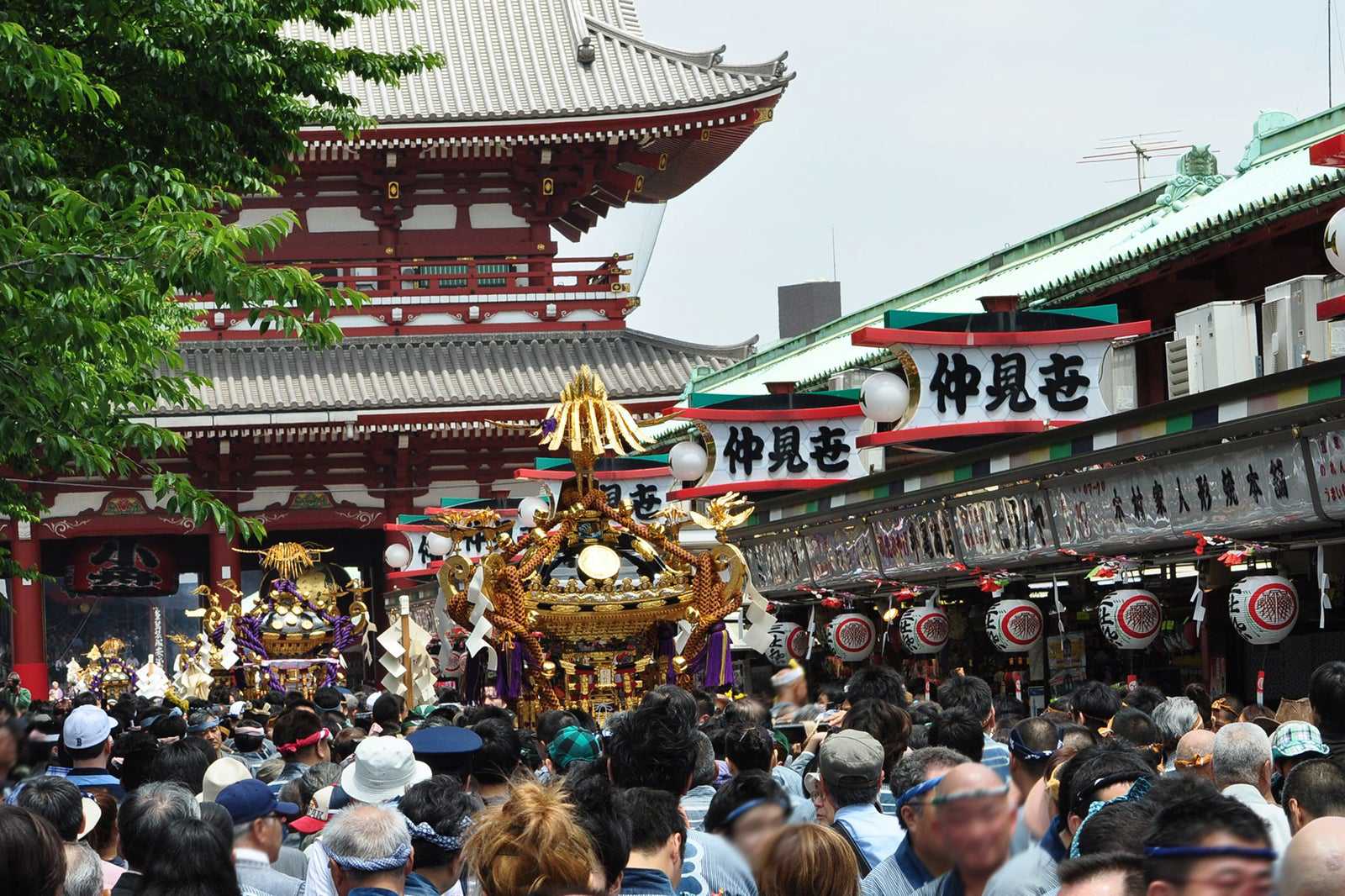
- Budget
- Paare
- Familien
Sanja Matsuri, the festival of Asakusa Shrine, is held on the third Friday, Saturday, and Sunday in May. On the first day, a long line of musicians and dancers in traditional costume parade around the town of Asakusa. The next day, the mikoshi (portable shrines) of the town districts are paraded, and on the last day, the mikoshi are brought into the shrine. This a quintessential Tokyo festival experience.
The Shinto ritual dedicated on this occasion is the Binzasara Dance, which is designated as one of Tokyo's Intangible Folk Cultural Properties. It’s said to have started as a rice planting event. Unique sounds of musical instruments, an elegant dance, and a lion dance are performed to pray for a good harvest and remove evil spirits.
Lage: 2-3-1 Asakusa, Taito-ku, Tokyo 111-0032, Japan
Öffnungszeiten: May
Telefon: +81 (0)3-3844-1575
KarteFoto von 江戸村のとくぞう (CC BY-SA 4.0) bearbeitet
- 9
Kurayami Festival
A festival procession of portable shrines passing through the darkness
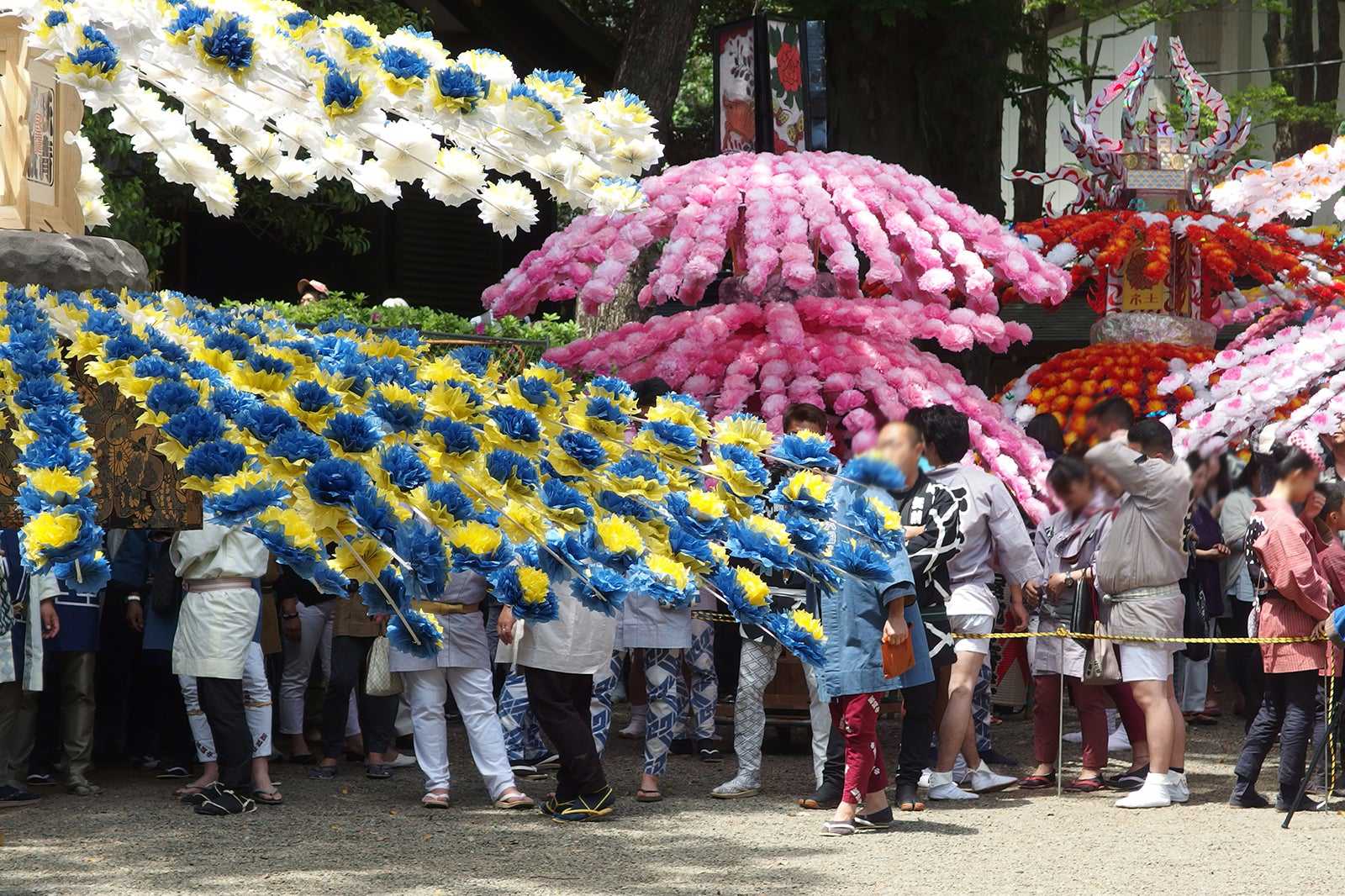
- Budget
- Paare
- Familien
Kurayami Festival (Darkness Festival), the festival of Okunitama Shrine, is known for its unique tradition of mikoshi (portable shrines) being paraded at night without any lights. The musicians of each float compete with each other and there’s a horse-racing ceremony too, followed by children’s mikoshi, a mando (lanterns) competition, and a parade of floats held the next day. The following night, the parade of mikoshi, the highlight of the festival, finally begins. On the morning of the final day, all of the mikoshi floats are lined up in front of the torii gate, bringing the festival to its finale.
The mikoshi that appear in the darkness of the night will really set your pulse racing. With countless street stalls, the whole area of Fuchu comes to life during this unique festival.
Lage: 3-1 Miyamachi, Fuchu City, Tokyo 183-0023, Japan
Öffnungszeiten: Around April—May
Telefon: +81 (0)42-362-2130
KarteFoto von Guilhem Vellut (CC BY 2.0) bearbeitet
- 10
Asakusa Samba Carnival
Rio, eat your heart out!

- Budget
- Paare
- Familien
Asakusa Samba Festival sees teams of dancers parade down Umamichi-dori Street and Kaminarimon-dori Street in Asakusa to a samba beat as they aim to win the competition. Judges look not only at the dance action, but also factors including the expression of a theme, dynamism, costumes, and musical performance.
This event started in 1981, based on the world-famous carnival of Rio de Janeiro, Brazil. Over the decades it has become one of the biggest events in Asakusa, bringing in half a million visitors. The secret to its success is that the dancing and costumes are seriously eye-catching. Let's dance!
Lage: 1-1 Asakusa, Taito-ku, Tokyo 111-0032, Japan
Öffnungszeiten: Around August—September
KarteFoto von Nesnad (CC BY-SA 4.0) bearbeitet
